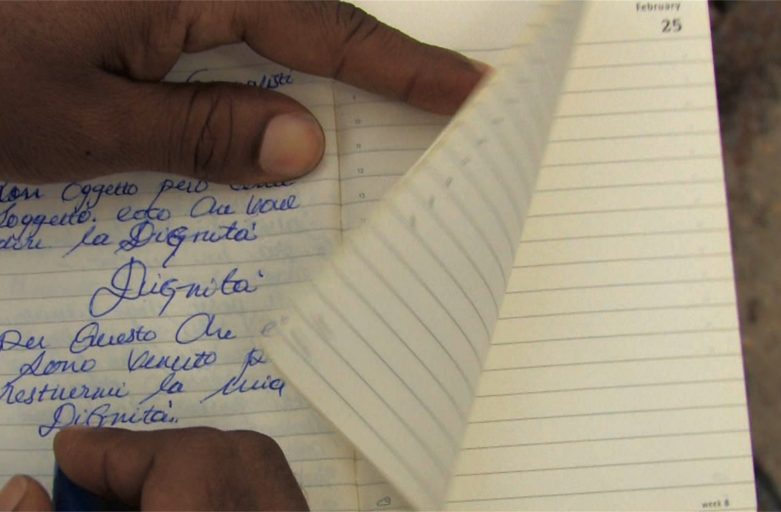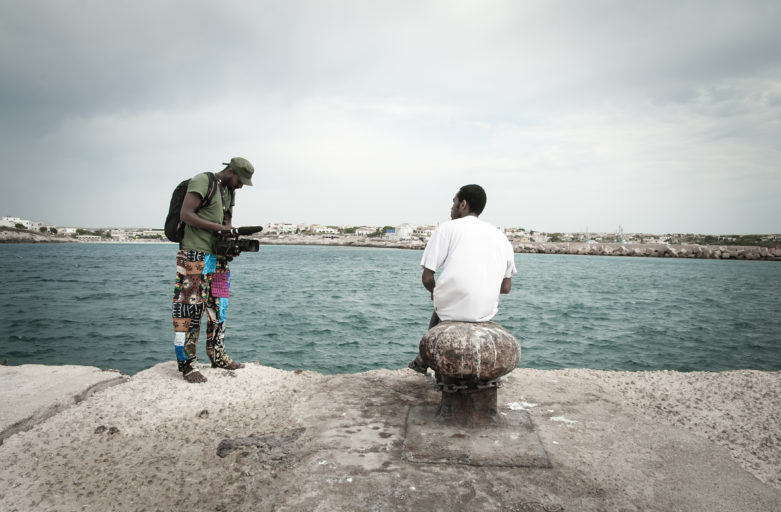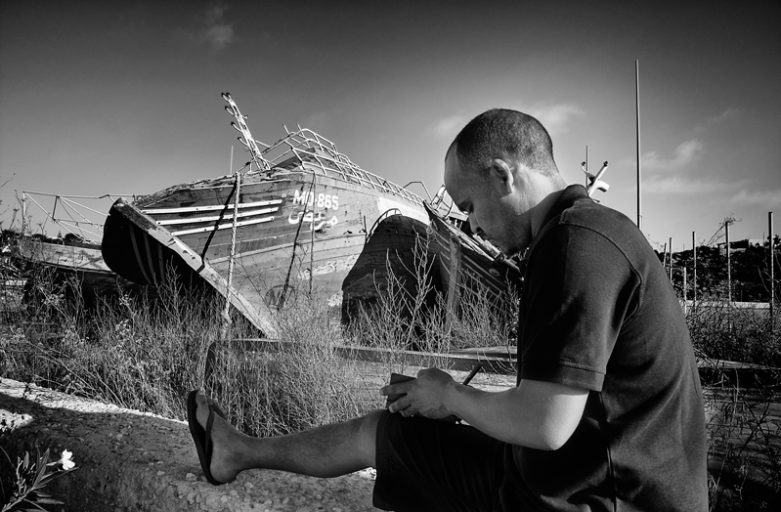The ‘research’ section is dedicated to research and critical literature addressing the work and activities of AMM and its development over time. It includes documents, research projects, and papers, but is also open to interpretations and debates regarding migrant testimony, memory, and self-representation in Italy, as well as to the results of research and critical investigations into migratory processes and their representation in contemporary society.
Cartographic Storytelling, Migration, and Reception Environments
Hanna Musiol
in Environment, Space, Place, Vol. 12, No. 2, 2020, pp. 1-30.
Les mots pour le dire : un cercle narratif avec des arrivants somaliens à Rome
Alessandro Triulzi
in Violence et récit: Dire, traduire, transmettre le génocide et l’exil, sous la direction de Marie-Caroline Saglio-Yatzimirsky, Paris: Hermann, 2020, pp. 257-268.
Archiviare il presente. L’autonarrazione dei migranti come fonte
Alessandro Triulzi
in Stranieri nel ricordo. Verso una memoria pubblica delle migrazioni, a cura di Daniele Salerno e Patrizia Violi, Bologna: il Mulino, 2020, pp. 41-62.
Previously published in German in Luisa Regazzoni, ed., Schriftlose Vergangenheiten, Berlin: De Gruyter, 2019, pp. 307-326.
Landscape is a space of action and thought
Costanza Meli
in PAD Pages on Arts & Design #17, December 2019.
Temporality in cosmopolitan solidarity: Archival activism and participatory documentary film as mediated witnessing of suffering at Europe’s borders
Karina Horsti
in European Journal of Cultural Studies, Vol. 22, No. 2, 2019, pp. 231-244.
Ten Years of Participatory Cinema as a Form of Political Solidarity with Refugees in Italy. From ZaLab and Archivio Memorie Migranti to 4CaniperStrada
Annalisa Frisina and Stefania Muresu
in Arts, 7(4), 2018.
Working with migrants’ memories in Italy: The Lampedusa dump
Alessandro Triulzi
in Crossings: Journal of Migration & Culture, Vol. 7, No. 2, 1 October 2016, pp. 149-163.
Stranded traces: Migrants’ objects, self-narration and ideology in a failed museum project
Gianluca Gatta
in Crossings: Journal of Migration & Culture, Vol. 7, No. 2, 1 October 2016, pp. 181-191.
Futura memoria
Susanna Guerini
in AM – Antropologia Museale, n. 37/39, 2015-2016.
Voci, racconti e testimonianze dall’Italia delle migrazioni. L’Archivio delle memorie migranti
Alessandro Triulzi
in Storia e futuro on line, n. 35, June 2014.
A Gaze from Lampedusa. Dagmawi Yimer’s Journey to the Outpost of Europe
Simona Wright (Director of the Italian Studies Program, The College of New Jersey, USA).
in Italica, Vol. 91, No. 4, 2014, pp. 775-802
From Long Journeys. African Migrants on the Road
edited by Alessandro Triulzi and Robert Lawrence McKenzie, Leiden and Boston: Brill, 2013.
Listening to Migrants’ Narratives: An Introduction
Alessandro Triulzi and Robert Lawrence McKenzie
‘Like a plate of spaghetti’. Migrant Narratives from the Libya-Lampedusa Route
Alessandro Triulzi
Our Journey
Dagmawi Yimer
Corpi di frontiera. Etnografia del trattamento dei migranti al loro arrivo a Lampedusa
Gianluca Gatta
in AM – Rivista della società italiana di antropologia medica, n. 33-34, October 2012.
Middle passages, musealizzazione e soggettività a Bristol e Lampedusa
Gianluca Gatta and Giusy Muzzopappa
in Estetica. studi e ricerche, No. 1, 2012.
Based on in-depth ethnographic research, this essay compares two rather different museum experiences: the heritagization of transatlantic slave trade in Bristol (UK) and the birth of a museum of migration in Lampedusa (Sicily). The question, open to debate, is whether the museum can contain simultaneously the hegemonic tale and its possible counter-narratives.
Per un archivio delle memorie migranti
Alessandro Triulzi
in Zapruder. Storie in movimento, n. 28, May-August 2012 (Photo by Desislava Valentinova Stoichkova).
From Colonia e postcolonia come spazi diasporici. Attraversamenti di memorie, identità e confini nel Corno d’Africa
edited by Uoldelul Chelati Dirar, Silvana Palma, Alessandro Triulzi, Alessandro Volterra, Roma: Carocci, 2011.
Memorie e voci erranti tra colonia e postcolonia
Alessandro Triulzi
Come in uno specchio. Il gioco delle identità a Lampedusa
Gianluca Gatta
The Madonna of the Sea
Maaza Menghiste
in Granta, No. 118, 2012.
Una nuova voce nel cinema italiano? L’emergenza di forme di cinema migrante in Italia
Alessandro Jedlowski
in Camera Africa: Classici, noir, Nollywood e la nuova generazione del cinema delle Afriche, edited by Vanessa Lanari, Fabrizio Colombo e Stefano Gaiga, Verona: Cierre Edizioni, 2011, pp. 69-76.
Africani in Italia: la memoria e l’archivio
Alessandro Triulzi
in Meridione, n. 2, April-June 2010, p. 30-50.



